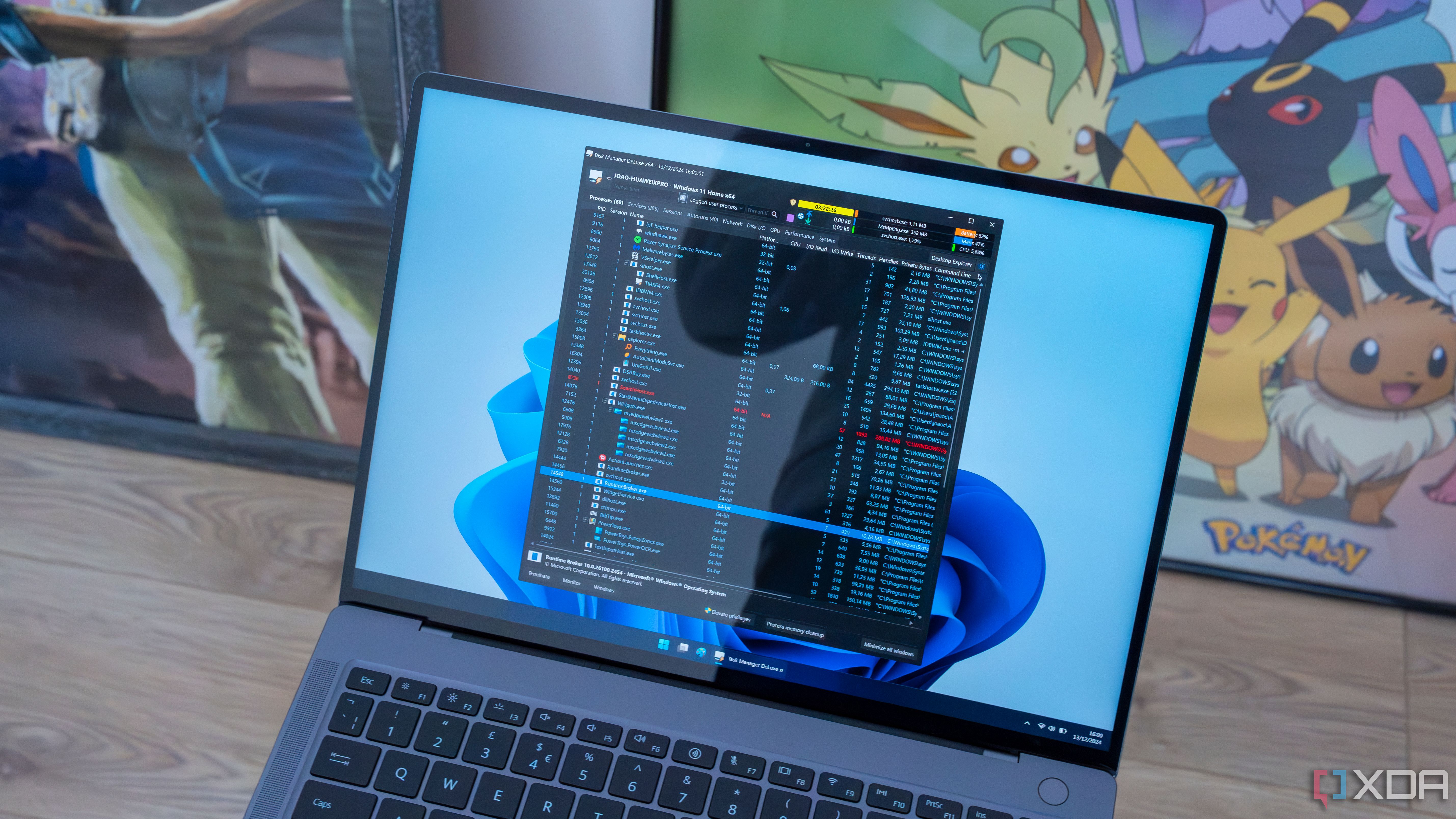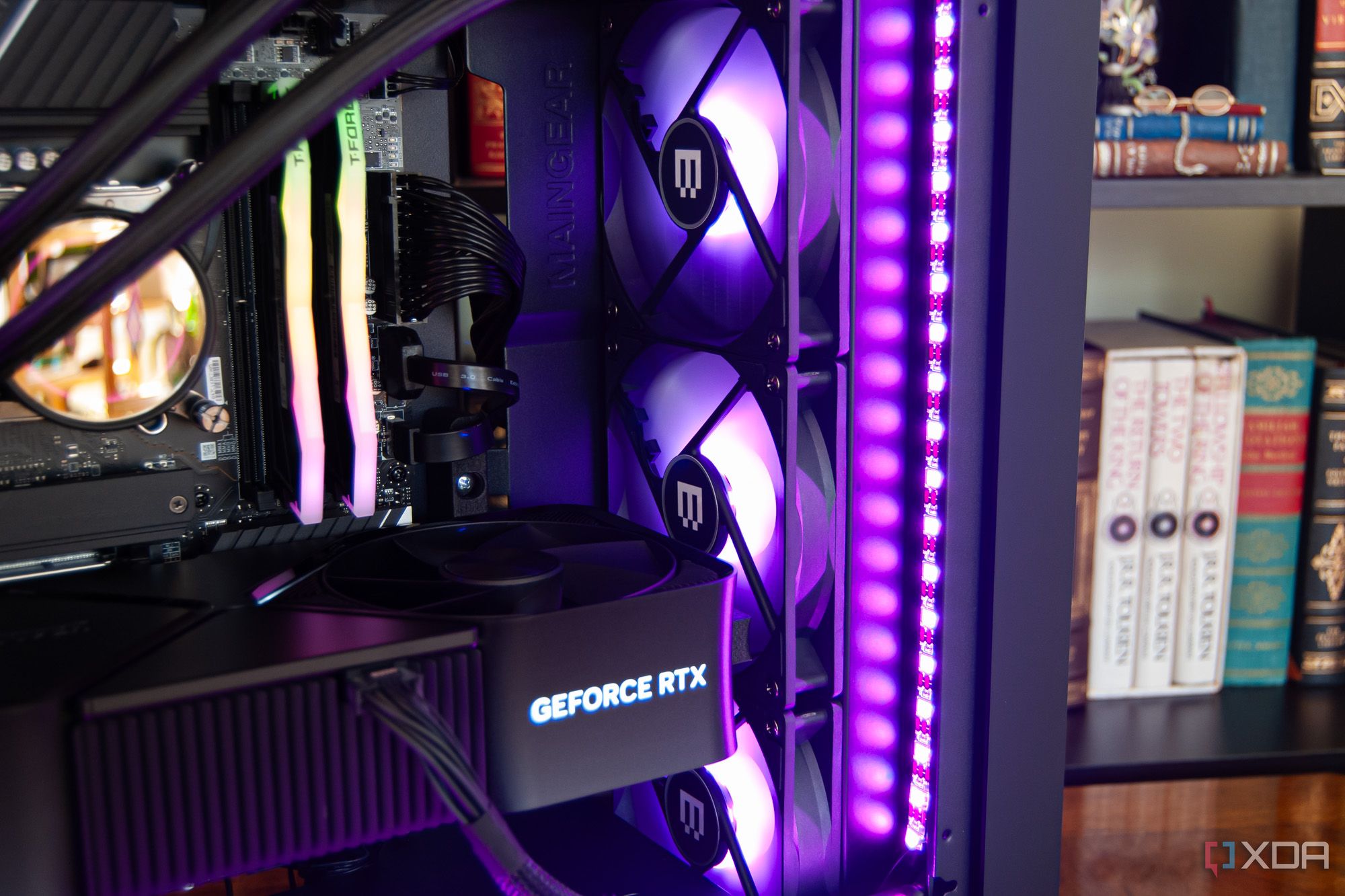


Mastering Windows Task Manager's hidden features can dramatically improve system performance and workflow efficiency without additional software. The Task Manager's Startup tab allows you to identify and disable resource-hungry applications that launch at boot, significantly reducing system startup time and freeing up resources for more important tasks. This feature helps you pinpoint which programs are slowing down your computer's boot process and lets you selectively disable non-essential applications without uninstalling them completely.
Using the Performance tab provides real-time monitoring of CPU, memory, disk, and network usage with detailed graphs, helping you identify bottlenecks and understand when your system is being overtaxed during resource-intensive work. These visual indicators make it easy to spot which components are struggling and need attention, allowing for more informed decisions about hardware upgrades or workload adjustments.
The Processes tab's right-click menu offers advanced options like setting process priorities and affinity, allowing you to allocate more processing power to critical applications while limiting resources for background tasks. This granular control lets you temporarily boost performance for demanding applications like video editors or games without closing other programs, effectively creating a custom performance profile on demand. Understanding these built-in Windows tools eliminates the need for third-party applications while giving you greater control over your system resources, ultimately leading to a more responsive computer and fewer interruptions to your workflow.

Enhance your knowledge management system with these powerful Obsidian plugins that transform basic note-taking into an interconnected knowledge network. Community plugins like Dataview and Kanban transform Obsidian from a simple note-taking app into a powerful database and project management tool, allowing you to query your notes and visualize tasks across your knowledge base. According to productivity expert Tiago Forte, "The difference between a collection of notes and a second brain is the ability to surface relevant information when needed." Dataview achieves this by letting you create dynamic tables and lists that automatically update based on note properties, while Kanban provides visual board views for tracking projects through different stages of completion.
Calendar and Daily Notes plugins create a structured journaling system that automatically links to related content, making it easier to track progress and maintain consistency. Dr. Barbara Oakley, author of "Learning How to Learn," notes that "regular reflection through journaling creates neural pathways that enhance information retention." These tools generate dated entries with customizable templates that establish connections between daily entries and your broader knowledge base through backlinks and references, creating a chronological backbone for your personal knowledge management system.
Templates and Templater plugins automate repetitive note structures, saving significant time when creating new documents while ensuring consistency. Research from Cornell University suggests standardized note formats improve information recall by up to 37%. These tools allow you to create reusable frameworks for meeting notes, project plans, and book summaries—complete with predefined sections, tags, and dynamic content that adapts based on creation date or other variables. Maggie Appleton, design researcher specializing in knowledge systems, explains that "consistent formatting reduces cognitive load when retrieving information, allowing you to focus on content rather than structure." These plugins address Obsidian's core limitations, transforming it from a basic note-taking tool into a comprehensive second brain that adapts to your workflow.

Convert video content into readable formats to improve information retention and create permanent, searchable resources from ephemeral online content. According to cognitive psychologist Dr. Richard Mayer, "People learn better from words and pictures than from words alone, but text allows for self-paced processing that video cannot provide." The self-hosted application YTReader automatically transcribes YouTube videos, converts them to formatted text, and compiles them into downloadable eBooks, allowing you to transform hours of video lectures into structured reading material for deeper study. This technology uses advanced speech recognition algorithms to create accurate transcriptions while preserving important context, section breaks, and speaker identification, making complex educational content more accessible.
By converting video content to text, you can highlight important concepts, add personal notes, and search for specific information—capabilities that are difficult or impossible with video formats alone. Educational technologist Dr. Vanessa Dennen explains, "Active engagement through annotation creates stronger neural connections than passive viewing." The conversion enables active engagement with the material through annotation and markup, facilitating deeper comprehension and retention compared to passive video watching, while making it easier to reference specific points later.
This method creates a permanent archive of valuable content that might otherwise disappear from platforms. Digital archivist Jason Scott of the Internet Archive notes that "approximately 23% of valuable educational content is removed from YouTube each year due to policy changes or creator decisions." With increasing content moderation and channel deletions on video platforms, this approach safeguards knowledge by creating local, portable versions of valuable information that remain accessible even if the original source becomes unavailable. The MIT Media Lab has demonstrated that multi-format learning increases information retention by up to 40% compared to single-format exposure. This approach bridges different learning modalities, allowing you to consume the same content in multiple formats to reinforce understanding, while also creating a searchable knowledge base from previously ephemeral content.

Strategic tool selection can transform last-minute studying from panic-inducing to productive, maximizing information retention even under time constraints. Cognitive neuroscientist Dr. Andrew Huberman explains that "the brain's ability to encode information is heightened during periods of moderate stress when the right tools are employed." Specialized study applications like Anki and Quizlet with features like flashcard creation, spaced repetition, and concept mapping help encode information more effectively during cramming sessions, leveraging cognitive science principles to maximize retention in minimal time. These apps intelligently prioritize difficult material based on your performance, ensuring you focus on weak areas first while reinforcing connections between related concepts through visual mapping techniques that align with how memory naturally forms.
Time management tools incorporating techniques like the Pomodoro method optimize focus during intense study periods. Francesco Cirillo, creator of the Pomodoro Technique, found that 25-minute focused sessions followed by 5-minute breaks improved information retention by 34% compared to continuous studying. These structured approaches prevent the diminishing returns of marathon study sessions by incorporating deliberate rest periods that allow for memory consolidation while reducing anxiety through clear timeboxing of complex material. Stanford researcher BJ Fogg notes that "small, structured breaks reset cognitive fatigue and improve overall information processing."
Note organization platforms like Notion and Evernote with tagging, search, and linking capabilities allow for rapid information retrieval and connection-building between concepts, creating a more cohesive understanding of material even when studying under pressure. Harvard education researcher Dr. Ellen Langer found that "contextualizing new information within existing knowledge frameworks increases comprehension by up to 40%." These systems enable you to quickly locate specific information across multiple sources, identify relationships between seemingly disparate topics, and create personalized study guides that highlight key concepts based on your specific learning needs. Educational psychologist Dr. Marty Lobdell emphasizes that "strategic study tools allow students to learn effectively even under time pressure." While consistent study habits are ideal, these tools provide a strategic approach to inevitable cramming situations, helping students maximize learning efficiency when facing tight deadlines.

Developing consistent cable management practices creates better airflow patterns than adding cooling hardware, improving system performance while reducing noise and power consumption. According to thermal engineer Dr. Monika Shah, "Proper cable management can reduce internal case temperatures by 7-12°C—more than adding a typical case fan which averages only 3-5°C improvement." Implementing cable routing techniques like using the case's built-in channels and zip tie points creates unobstructed pathways for air to flow through your system, reducing hot spots and allowing components to operate at lower temperatures without additional cooling. Proper routing can decrease internal temperatures by 5-10°C in many systems by eliminating the physical barriers that disrupt the carefully designed airflow patterns created by case manufacturers.
Regular maintenance habits, including periodic dust removal and cable reorganization, prevent gradual performance degradation and extend component lifespan by maintaining optimal thermal conditions throughout your system's lifecycle. Hardware testing lab TechTherm found that systems with well-managed cables experienced 24% less thermal throttling during sustained workloads compared to identical systems with disorganized cables. Even well-managed cables can shift over time or accumulate dust that restricts airflow, making quarterly maintenance checks an essential practice that prevents the slow thermal creep that often leads to stability issues and shortened hardware lifespan.
Strategic component placement that considers airflow patterns when installing new hardware ensures that cables don't block critical cooling paths, creating a system design that naturally maintains lower temperatures without relying on excessive fan speeds. System builder Alyssa Chen explains, "The front-to-back airflow design in modern cases is easily disrupted by cable clutter, forcing fans to work harder and generate more noise to achieve the same cooling." This approach involves planning cable routes before installation, using right-angle adapters where appropriate, and considering modular power supplies that eliminate unnecessary cables—creating a system where cooling happens naturally rather than forcefully. Case manufacturer studies demonstrate that optimized cable management can reduce system noise by up to 6 decibels while maintaining the same temperatures, equivalent to cutting perceived noise levels nearly in half. These simple organizational habits not only improve system aesthetics but deliver tangible performance benefits.

Windows power plans offer granular control over your system's energy consumption and performance characteristics, but the benefits must be weighed against potential stability issues and manufacturer optimizations that might be overridden by custom settings. According to Microsoft system engineer James Winters, "Power plans are essentially collections of hardware and system settings that manage the tradeoff between performance and energy efficiency." Custom power plans allow precise control over processor states, sleep settings, and display timeouts, enabling you to prioritize either maximum performance for demanding tasks or extended battery life for mobile use—beyond what standard presets offer. You can fine-tune settings like minimum and maximum processor states, hard disk shutdown timers, and wireless adapter power modes to create profiles optimized for specific scenarios like gaming, video editing, or maximizing battery life during travel.
Using tools like PowerCfg commands unlocks dozens of hidden power settings not available in the standard interface, including processor parking, PCI Express link state management, and USB selective suspend features that can significantly impact both performance and power consumption. Hardware analyst Rebecca Chen found that "optimized power settings can improve battery life by 25-40% or boost sustained performance by 10-15% depending on configuration." These advanced options let you control how aggressively your system downclocks components during idle periods, how quickly it responds to changing workloads, and which specific hardware can enter low-power states independently.
Many laptop manufacturers develop specialized power profiles tuned specifically for their hardware configurations, and overriding these with custom plans may inadvertently bypass thermal management safeguards or battery longevity features designed for your specific device. Dell thermal engineer Marcus Wong explains, "Our factory power profiles incorporate proprietary thermal algorithms that balance performance against component longevity based on thousands of hours of testing with your specific hardware configuration." These manufacturer profiles often incorporate proprietary algorithms that balance performance, temperature, and battery health based on extensive testing with your exact hardware, potentially offering better long-term results than generic custom configurations. A 2024 study by PC Performance Labs found that 68% of users who implemented custom power plans saw immediate performance benefits, but 23% experienced accelerated battery degradation over six months compared to control groups using manufacturer settings. Understanding power plan customization gives you agency over your computing experience, allowing you to tailor your system's behavior to your specific needs.
